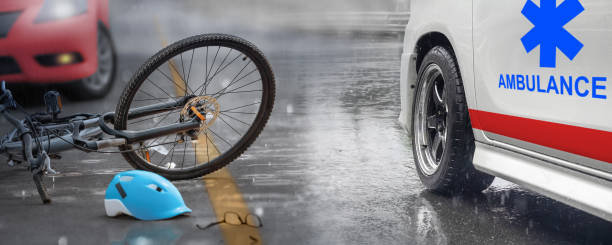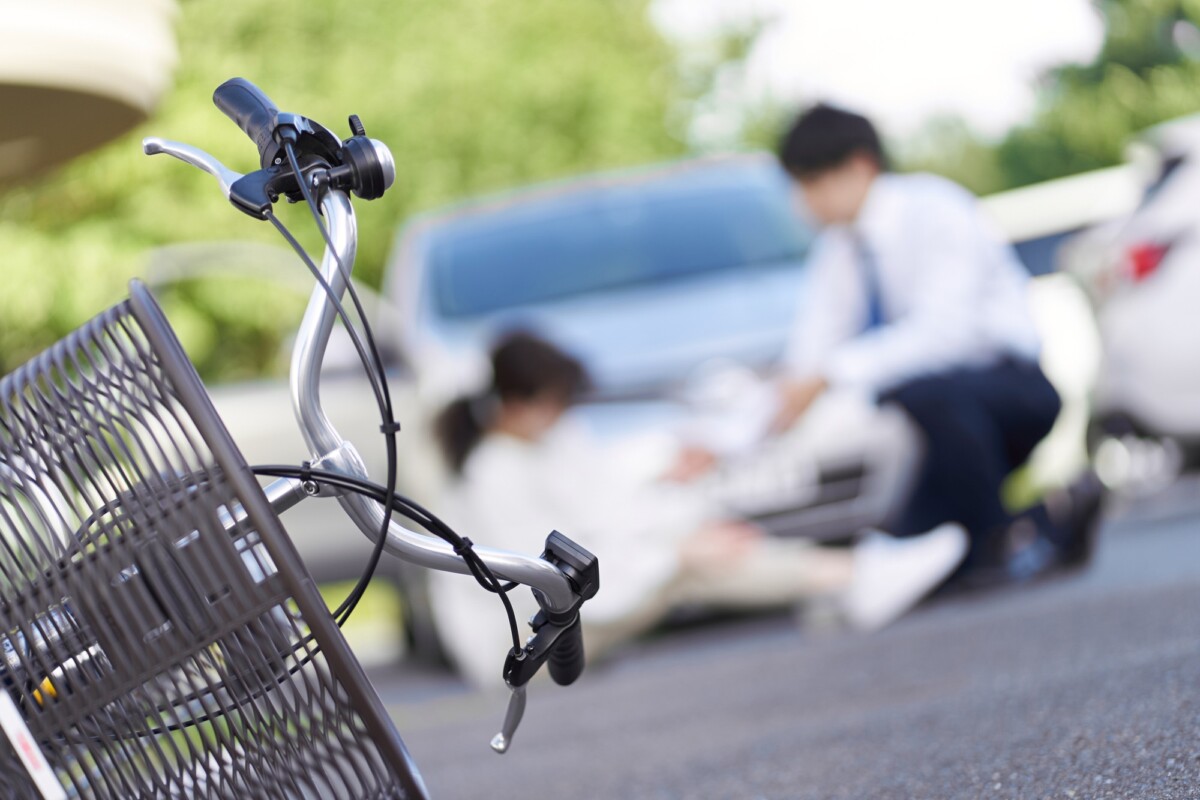Bicycling is an increasingly popular mode of transportation and recreation across the United States. However, the risks associated with sharing the road with motor vehicles can be severe. If you’re a
bicycle accident victim, knowing your rights is critical to ensuring you receive proper compensation and support.
Whether the accident was caused by a negligent driver, poorly maintained roads, or defective equipment, you may be entitled to recover damages for
medical expenses,
lost income,
pain and suffering, and more. For legal guidance tailored to your situation, consider speaking with a
personal injury expert who can help protect your rights.

Ready to connect with top legal professionals? Get immediate support— Call us at 877-550-8911.
Connect with Our Legal Team
Common Causes of Bicycle Accidents
Understanding the root causes of bicycle accidents can help establish liability and guide your legal path forward. Some of the most common causes include:
- Driver negligence: Distracted or aggressive driving, failure to yield, or improper lane changes often lead to collisions with cyclists.
- Unsafe road conditions: Potholes, debris, lack of bike lanes, or poor signage can result in dangerous riding conditions.
- Dooring incidents: When drivers or passengers open a car door into a cyclist’s path.
- Failure to obey traffic laws: Either by the cyclist or driver.
According to the
National Highway Traffic Safety Administration (NHTSA), thousands of cyclists are injured or killed annually due to preventable traffic incidents. Awareness of these causes can help you build a solid legal case.
Legal Options for Bicycle Accident Victims
As a
bicycle accident victim, you have several legal options depending on the circumstances:
- Insurance Claims: You may file a claim with the at-fault driver’s auto insurance. Some states also allow cyclists to use their own auto insurance if they carry personal injury protection (PIP).
- Personal Injury Lawsuits: If a negligent party caused your injuries, you can sue for damages beyond insurance limits.
- Product Liability Claims: If a defective bike part contributed to the accident.
- Government Claims: Poorly maintained public roads or faulty infrastructure could mean a claim against a city or municipality.
It’s important to act promptly. Each state has a
statute of limitations that sets the time limit to file a claim. An attorney can ensure deadlines are met and paperwork is filed correctly.
Importance of Gathering Evidence
One of the most critical steps after a bicycle accident is collecting evidence. This strengthens your claim and helps demonstrate the extent of the damages:
- Photographs: Take pictures of the scene, injuries, vehicle damage, and road conditions.
- Police Report: Call the police immediately after the accident and ensure an official report is created.
- Witnesses: Collect names and contact information of people who saw the incident.
- Medical Records: Keep detailed records of hospital visits, diagnoses, treatments, and prescriptions.
Documenting everything allows your legal team to build a case that accurately reflects your suffering and losses.
How Insurance Claims Work
Filing an insurance claim after a bicycle accident involves several steps:
- Notify the insurer: Report the incident to the relevant insurance provider promptly.
- Submit documentation: Provide evidence like medical bills, police reports, and photographs.
- Insurance investigation: An adjuster will evaluate your claim and determine liability.
- Settlement offer: If approved, a settlement will be proposed, which you can accept, reject, or negotiate.
Be cautious when communicating with insurance adjusters. Their goal is to minimize the payout. If you’re offered a low settlement, contact a qualified legal professional before accepting. For more resources on this process, visit
Nolo’s legal guides.
Seeking Medical Attention and Documenting Injuries
Even if your injuries seem minor, seeking immediate medical care is critical. Internal injuries or concussions may not show symptoms right away.
- Visit a doctor: Get a full medical evaluation to document your condition.
- Track medical expenses: Include prescriptions, physical therapy, follow-ups, and out-of-pocket costs.
- Maintain a recovery journal: Log pain levels, emotional distress, and the accident’s impact on daily life.
These records help show the full extent of your suffering and are powerful tools in settlement negotiations or court proceedings.
Returning to Daily Life After an Accident
Recovering physically and emotionally from a bicycle accident can take time. Don’t rush your return to normal routines. Stay connected with your healthcare provider, follow their recommendations, and seek mental health support if necessary.
It’s also essential to:
- Avoid activities that worsen your condition
- Maintain a strong support network
- Stay engaged with your legal team to track your case progress
Finding the Right Legal Representation
Hiring the right attorney can make a significant difference in the outcome of your case. Look for a lawyer with:
- Specialization in bicycle or personal injury law
- Proven success handling similar cases
- Transparent fee structures (many offer free consultations and contingency-based fees)
For example, you can start by exploring legal firms via
FindLaw, a trusted legal directory in the U.S.
Working with a reputable firm ensures that your case is professionally managed and your rights are protected.
 Preventing Future Bicycle Accidents
Preventing Future Bicycle Accidents
Preventing accidents is a shared responsibility between cyclists, motorists, and local governments. Here are some essential safety tips:
- Wear a helmet and visible clothing
- Use bike lights and reflectors, especially at night
- Obey all traffic signals and ride predictably
- Stay in designated bike lanes when available
- Avoid distractions, such as using phones while riding
Cities must also play a role in safety by maintaining infrastructure, enforcing traffic laws, and promoting bike-friendly road designs.
Internal Resource
For more information on your rights and legal advice after personal injuries, visit
LegalCaseReview.com, a helpful source for free case evaluations and legal support.
FAQs: Bicycle Accident Victims’ Rights
Q1: What should I do immediately after a bicycle accident?
A: Move to a safe area, call 911, seek medical attention, and gather evidence such as photos and witness statements.
Q2: Can I get compensation if the accident was partially my fault?
A: Yes, many states follow comparative fault laws, which may allow partial compensation based on your degree of fault.
Q3: How long do I have to file a bicycle accident claim?
A: It varies by state. In most cases, the statute of limitations ranges from 1 to 3 years after the date of the accident.
Q4: Do I need a lawyer to file a bicycle accident claim?
A: While not required, having a lawyer significantly increases your chances of a fair settlement and proper legal guidance.
Q5: What if I was hit by an uninsured driver?
A: You may still be covered under your own uninsured motorist coverage or explore filing a civil lawsuit.
Don’t wait to secure the legal representation you deserve. Visit Legal Case Review today for free quotes and tailored guidance, or call 877-550-8911 for immediate assistance.
Scott Thompson is an authoritative industry veteran, CEO and Founder of Astoria Company. With his extensive experience spanning decades in the online advertising industry, he is the driving force behind Astoria Company. Under his leadership, Astoria Company has emerged as a distinguished technology advertising firm specializing in domain development, lead generation, and pay-per-call marketing. Thompson is widely regarded as a technology marketing expert and domain investor, with a portfolio comprising over 570 domains.

 Preventing Future Bicycle Accidents
Preventing Future Bicycle Accidents


